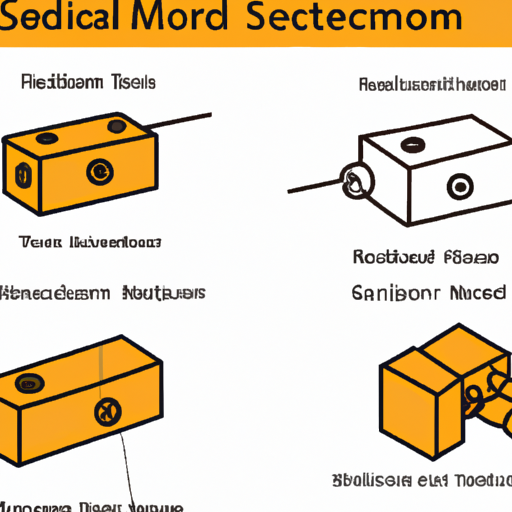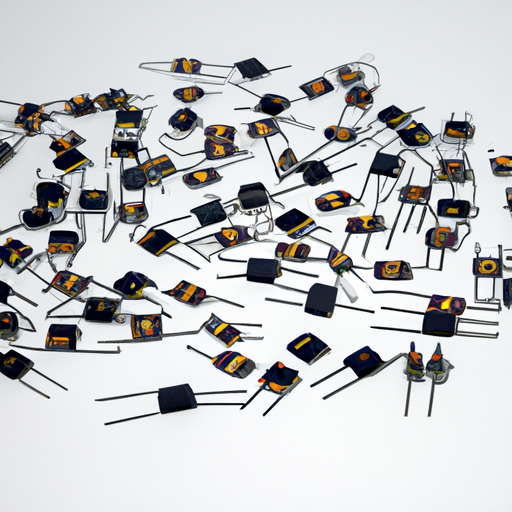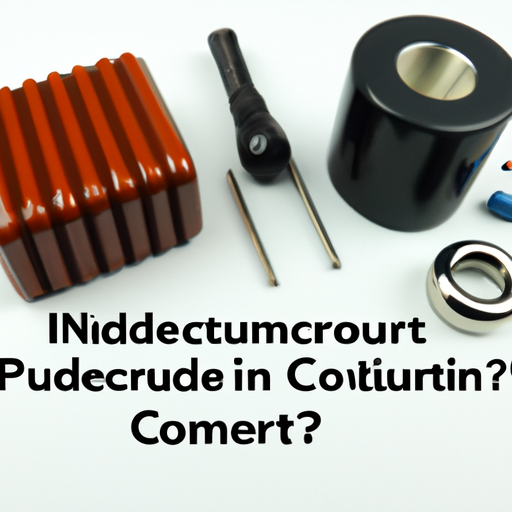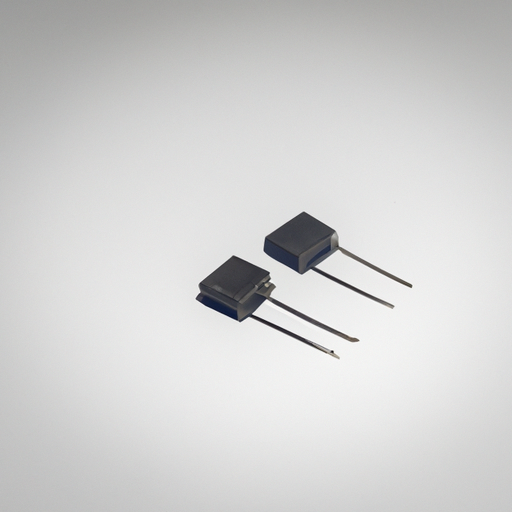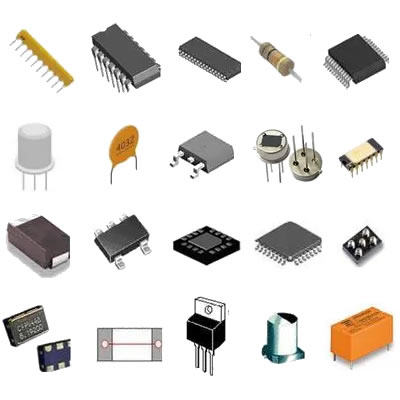What are the mainstream models of fixed inductors?
What are the Mainstream Models of Fixed Inductors?
I. Introduction
A. Definition of Fixed Inductors
Fixed inductors are passive electronic components that store energy in a magnetic field when electrical current flows through them. Unlike variable inductors, which allow for adjustments in inductance, fixed inductors have a predetermined inductance value, making them essential in various electronic applications.
B. Importance of Fixed Inductors in Electronic Circuits
Fixed inductors play a crucial role in electronic circuits, serving functions such as filtering, energy storage, and signal processing. They are commonly found in power supplies, radio frequency applications, and audio equipment, where they help manage current and voltage levels, reduce noise, and improve overall circuit performance.
C. Overview of the Article
This article will explore the basics of inductance, the different types of fixed inductors, mainstream models, selection criteria, and future trends in fixed inductor technology. By the end, readers will have a comprehensive understanding of fixed inductors and their significance in modern electronics.
II. Basics of Inductance
A. Definition of Inductance
Inductance is the property of an electrical conductor that opposes changes in current. It is measured in henries (H) and is defined as the ratio of the induced electromotive force (EMF) to the rate of change of current. The higher the inductance, the greater the ability of the inductor to store energy.
B. How Inductors Work
When current flows through an inductor, it generates a magnetic field around it. If the current changes, the magnetic field also changes, inducing a voltage (back EMF) that opposes the change in current. This property is known as Lenz's Law and is fundamental to the operation of inductors in circuits.
C. Key Parameters of Inductors
1. **Inductance Value (L)**: The primary specification of an inductor, indicating its ability to store energy.
2. **Current Rating**: The maximum current the inductor can handle without overheating or saturating.
3. **DC Resistance (DCR)**: The resistance of the inductor when a direct current flows through it, affecting efficiency.
4. **Saturation Current**: The current level at which the inductor's inductance begins to decrease due to core saturation.
5. **Quality Factor (Q)**: A measure of the inductor's efficiency, defined as the ratio of its inductive reactance to its resistance at a specific frequency.
III. Types of Fixed Inductors
A. Air-Core Inductors
1. Characteristics
Air-core inductors do not use a magnetic core, relying solely on the air surrounding the coil to create inductance. They are lightweight and have low losses, making them suitable for high-frequency applications.
2. Applications
Commonly used in RF circuits, air-core inductors are ideal for applications requiring minimal distortion and high efficiency.
B. Iron-Core Inductors
1. Characteristics
Iron-core inductors utilize an iron core to enhance inductance. They can store more energy than air-core inductors but may suffer from higher losses due to hysteresis and eddy currents.
2. Applications
These inductors are often found in power supplies and transformers, where high inductance values are necessary.
C. Ferrite-Core Inductors
1. Characteristics
Ferrite-core inductors use ferrite materials, which have high magnetic permeability and low losses at high frequencies. They are compact and efficient.
2. Applications
Ferrite-core inductors are widely used in switching power supplies, filters, and RF applications.
D. Laminated-Core Inductors
1. Characteristics
Laminated-core inductors consist of thin layers of magnetic material, reducing eddy current losses. They provide high inductance with improved efficiency.
2. Applications
These inductors are commonly used in transformers and inductors for power applications.
IV. Mainstream Models of Fixed Inductors
A. Wire-Wound Inductors
1. Description and Characteristics
Wire-wound inductors are constructed by winding a wire around a core material. They offer high inductance values and are suitable for various applications.
2. Popular Models
Vishay IHLP Series: Known for their low profile and high current ratings, these inductors are ideal for power applications.
Wurth Elektronik WE-PD Series: These inductors feature low DCR and high saturation current, making them suitable for DC-DC converters.
B. Multilayer Inductors
1. Description and Characteristics
Multilayer inductors are made by stacking multiple layers of conductive and insulating materials. They are compact and provide high inductance in a small footprint.
2. Popular Models
Murata LQG Series: These inductors are known for their high Q factor and low DC resistance, making them suitable for RF applications.
TDK MLG Series: Offering a wide range of inductance values, these inductors are ideal for compact electronic devices.
C. Chip Inductors
1. Description and Characteristics
Chip inductors are small, surface-mount devices that provide high inductance in a compact package. They are widely used in modern electronics.
2. Popular Models
Coilcraft 0805CS Series: These inductors are known for their low profile and high current ratings, making them suitable for portable devices.
Bourns SRR Series: Featuring low DCR and high saturation current, these inductors are ideal for power management applications.
D. Toroidal Inductors
1. Description and Characteristics
Toroidal inductors are wound in a doughnut shape, which helps to contain the magnetic field and reduce electromagnetic interference. They are efficient and compact.
2. Popular Models
Amidon FT Series: These toroidal inductors are known for their high inductance and low losses, making them suitable for RF applications.
Ferrocore Toroidal Inductors: Offering a range of inductance values, these inductors are ideal for power applications.
V. Selection Criteria for Fixed Inductors
A. Application Requirements
When selecting a fixed inductor, it is essential to consider the specific requirements of the application, including inductance value, current rating, and frequency response.
B. Environmental Considerations
Factors such as temperature, humidity, and exposure to chemicals can affect the performance of inductors. Choosing components that can withstand the operating environment is crucial.
C. Cost vs. Performance Trade-offs
Balancing cost and performance is vital in selecting inductors. While high-performance inductors may offer better efficiency, they can also be more expensive.
D. Manufacturer Reputation and Support
Choosing reputable manufacturers ensures quality and reliability. Additionally, good customer support can be invaluable for troubleshooting and technical assistance.
VI. Future Trends in Fixed Inductor Technology
A. Miniaturization and Integration
As electronic devices become smaller, the demand for compact inductors is increasing. Manufacturers are focusing on miniaturization and integration with other components to save space.
B. Enhanced Performance Materials
The development of new materials, such as high-permeability ferrites and advanced polymers, is improving the performance of inductors, allowing for higher efficiency and lower losses.
C. Smart Inductors and IoT Applications
With the rise of the Internet of Things (IoT), there is a growing interest in smart inductors that can monitor and adjust their performance based on real-time data, enhancing the functionality of connected devices.
VII. Conclusion
A. Recap of Key Points
Fixed inductors are essential components in electronic circuits, with various types and models available to meet diverse application needs. Understanding the basics of inductance, the characteristics of different inductor types, and the selection criteria is crucial for engineers and designers.
B. Importance of Choosing the Right Inductor
Selecting the right fixed inductor can significantly impact the performance and reliability of electronic devices. Careful consideration of application requirements, environmental factors, and manufacturer reputation is essential.
C. Final Thoughts on the Future of Fixed Inductors
As technology continues to evolve, fixed inductors will play a vital role in the development of more efficient and compact electronic devices. Staying informed about trends and advancements in inductor technology will be crucial for engineers and designers in the years to come.
VIII. References
A. Academic Journals
- IEEE Transactions on Power Electronics
- Journal of Applied Physics
B. Industry Publications
- Electronic Design Magazine
- EDN Network
C. Manufacturer Datasheets and Specifications
- Vishay, Wurth Elektronik, Murata, TDK, Coilcraft, Bourns, Amidon, Ferrocore
This comprehensive overview of fixed inductors provides valuable insights into their types, models, and selection criteria, equipping readers with the knowledge needed to make informed decisions in their electronic design projects.

